1. [Answer by: Adam D'Angelo] Former CTO of Facebook, founder of Quora
"When they moved from Harvard to Palo Alto, I stayed in their first house for a summer. The zip line from the rooftop to the swimming pool shown in the movie was real. The chimney, however, was never knocked over; that was added for dramatic effect in the movie."
2. [Answer by: Aaron Greenspan] He considers himself the original owner of the Facebook concept, having created the prototype houseSYSTEM. He testified as a witness in the Winklevoss lawsuit against Mark Zuckerberg. For details, see the New York Times report. Aaron Greenspan believes he is the only significant character omitted from the movie.
"In the film, Mark's initial motivation to create the website is portrayed as an obsession with the Final Clubs. I don't know if he was truly obsessed, but he certainly had other motivations, such as creating a universal portrait directory for the campus, hinted at by The Crimson, which I've already answered before.
The part about Facemash in the movie is greatly exaggerated, to make Mark's performance impressive and establish his 'genius' image. In reality, there are only 6,400 undergraduates at Harvard, and the movie claims it got '22,000 hits in two hours', meaning everyone must have suddenly been using the site. Many, including myself, didn't know what they had done until we saw their story in The Crimson. So, in the first few hours, very few people were using the site. The traffic on their site was likely counted as 'hits', where each visitor could have 2 to 3 or even more hits. The site didn't impact Harvard's campus network as shown in the movie. The crash happened in Mark's dorm, where the site was hosted. If HASCS (Harvard Arts and Sciences Computing Services) decided to cut off access to Mark's site, it was because the contentious content hosted by Mark violated copyright law. (Harvard University owns the copyright of student portraits on Facebook.)

The school board's interrogation of Mark in the movie, where he asks the administrative officer to thank him for warning them about design flaws in the campus network, clearly reminds me of what I wrote in my book, basically the same thing – I had mentioned security flaws on various websites to HASCS that they refused to acknowledge – except I never exploited these findings for my gain or amusement. I just sent emails to HASCS or the relevant departments. Since Ben Mezrich used my book as source material; it's likely that this sentiment was also incorporated into Mark's character in the movie. If so, that wasn't my intention.
Mark's use of a Sony VAIO in the movie is accurate. Interestingly, the fireplace in Kirkland House had a sticker saying 'USE OF THIS FIREPLACE IS PROHIBITED'. In fact, in 2003, almost every dorm fireplace at Harvard had such a sticker due to administrative regulations. The Apache configuration file directory listing and the WGET download command that appears on Mark's laptop are exactly as shown in the movie.
Chris Hughes is referred to as a programmer in the movie. As far as I know, he was not a programmer then and is not now. David Kirkpatrick said that the film's portrayal of Dustin Moskovitz was understated, which is a true reflection of the situation at the time – I'm sure they did a lot of work.
Although Random House confirms that original author Ben Mezrich interviewed the Cameron Winklevoss twins, I'm pretty sure the parts involving Larry Summers in the movie must have been influenced by my book's opening description of meeting Summers. Larry Summers didn't tell his assistant to punch me in the face. But when I met him, his behavior was as rude as in the movie, or worse. In real life, his assistant had to interrupt him to forcibly rephrase his language because they were very angry at the time.

Many campus buildings in the movie were shot incorrectly. Of course, this is because Harvard University has some restrictions on movie filming. Maxwell-Dworkin is a modern glass building, its name is carved on the front of a stone at the entrance, not on the glass. Bill Gates' speech in Lowell Lecture Hall, but he didn't mention 'the next Bill Gates', although I did ask Bill Gates a question about the possibility of the next Microsoft at the end of his speech.
All the Facebook-related testimonies I made in court were attended by only one of the parties. The other parties were represented by their lawyers, who asked questions one by one. The proceedings have been recorded as video material.
I'm not familiar with the real existence of the character Eduardo. I think this movie, except for the complete omission of my character, depicted most of the events at the time and captured the character of Eduardo (as well as the Winklevoss brothers) during those frustrating years I experienced. I enjoyed watching this movie.

3. [Answer by: Mark Zuckerberg] Mark was asked about his views on "The Social Network" during an interview at Y Combinator's Startup School on October 16, 2010. His response was as follows:
"There are many interesting things they did to create realism. Every T-shirt and sweater worn by the character in the movie, I have one just like it. But...there are many mistakes in the movie, and many random details are real.
I think the most interesting part of the movie in terms of theme is that they got the whole frame of the movie wrong. The movie begins with me and a girl (who doesn't exist in real life), and she gets me down. The frame of this movie is that I created Facebook or something similar to get girls or to get into various social groups at Harvard.
People who know me in real life know that I'm still dating the same girl I was dating when I started Facebook. So the movie is not real. The people who made this movie don't understand the motivation of people in Silicon Valley to build things. They can't understand that some people want to build things just because they like to do it.

4. [Answer by: Sean Parker] Former consultant and director of Facebook, guided Mark Zuckerberg through much of Facebook's early creation.
Sean Parker, when asked about "The Social Network" at the DLD conference, said he enjoyed the movie, it was well shot, and he respects the work of director David Fincher, but the movie is "completely fictional."
Regarding the scene in the movie where he is portrayed using drugs with Victoria's Secret models, Parker said, "I wish my life was that cool."
Parker explained: "The most uncomfortable part of the movie for me was when Justin Timberlake, playing Sean Parker, wrote a check and threw it in Eduardo's face, then kicked him out of the Facebook building. I still keep in touch with Eduardo frequently, and he is my friend. It's very unreasonable to do that in the movie, who would do that?"
















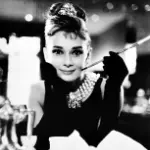






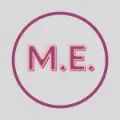




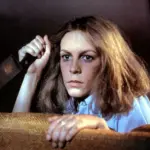















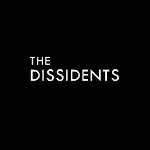

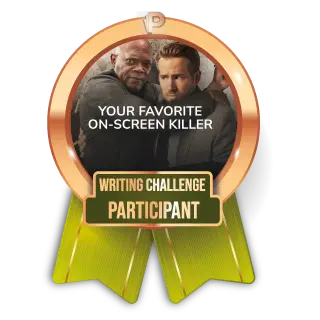


Share your thoughts!
Be the first to start the conversation.